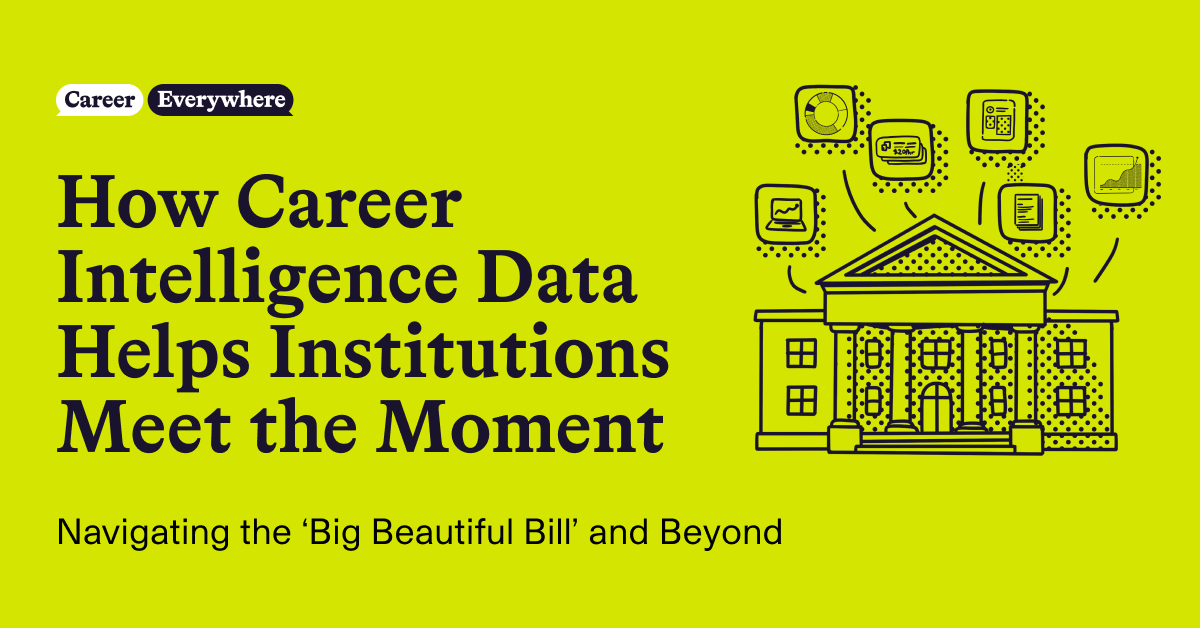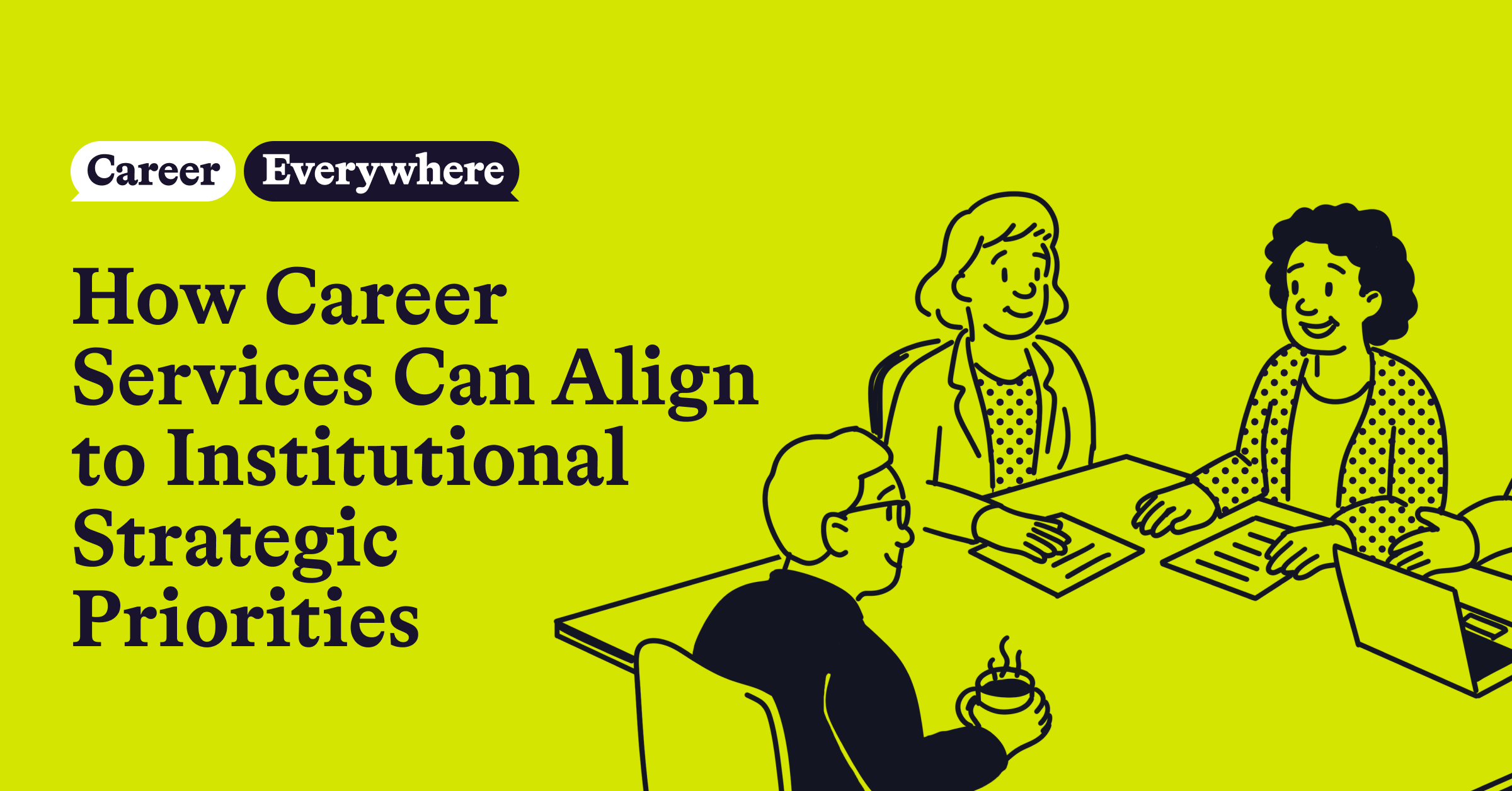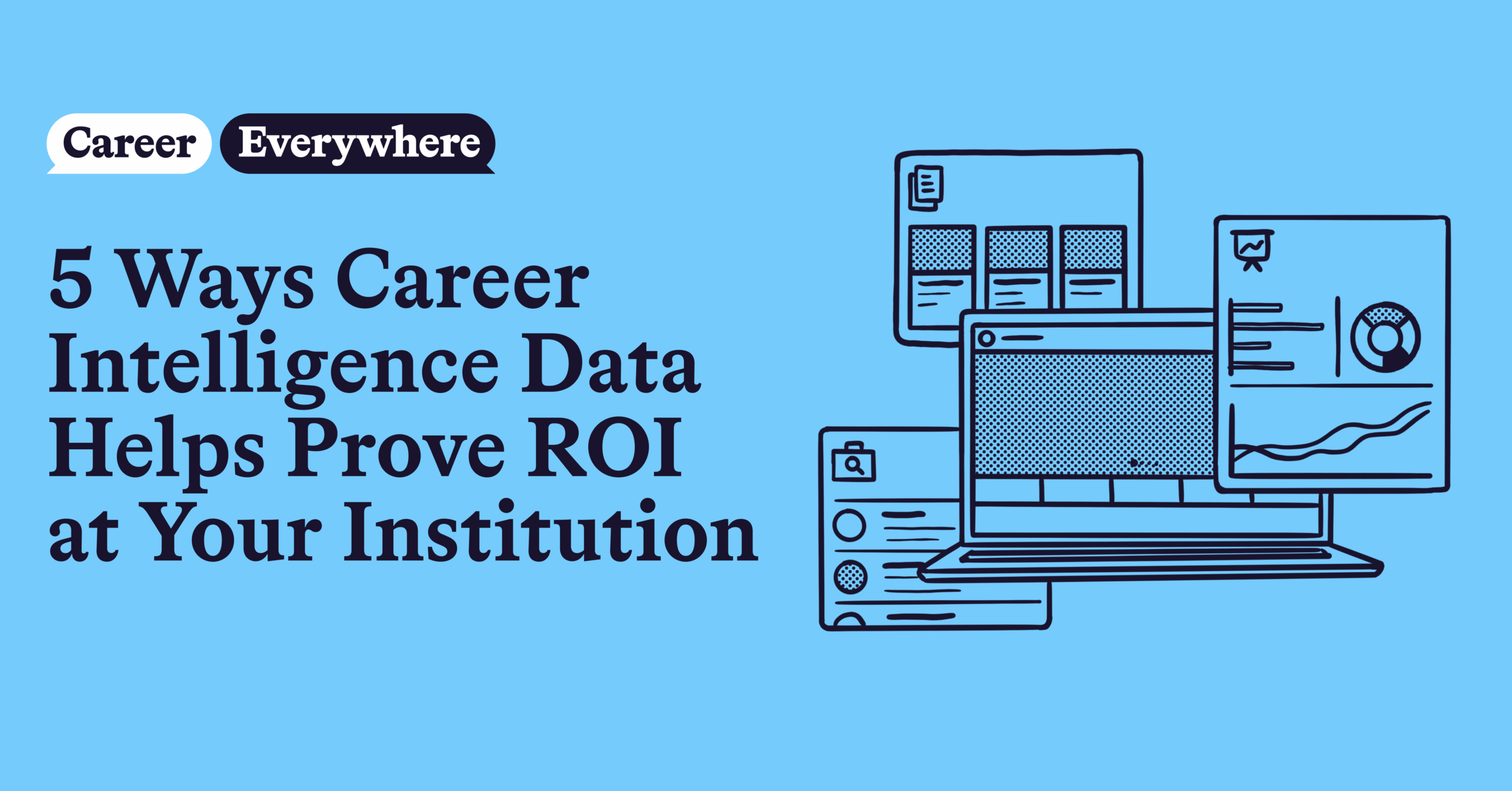
Higher education is facing one of the most consequential shifts in federal policy in decades. The forthcoming One Big Beautiful Bill Act (OBBBA), alongside a wave of state and federal initiatives, is re-centering higher education’s value proposition around one thing: Career outcomes.
With new caps on student loans, repayment tied to earnings, and program eligibility contingent on graduate success, institutions will no longer be able to separate academic strategy from workforce outcomes. Funding, affordability, and even program viability are now directly linked to the return students see after graduation.
So, how can colleges and universities prepare? One of the most powerful forms of insight is Career Intelligence Data.
What is Career Intelligence Data?
Career Intelligence Data combines two critical sources of insight:
- Labor market data: The forward-looking view of demand in the workforce—skills, roles, industries, employers, and compensation trends.
- Outcomes data: The backward-looking evidence of where graduates actually land—job titles, industries, salaries, geographic mobility, and placement rates.
Together, they provide a full-spectrum picture of career outcomes: What the market is demanding and how well your institution is delivering.
Read more about Career Intelligence Data in this article.
Why it matters in the era of the ‘Big Beautiful Bill’
The OBBBA fundamentally ties program eligibility and student borrowing power to measurable outcomes. Programs producing low graduate earnings may lose access to federal aid. Graduate loan caps mean students will be more selective about programs that offer clear ROI. And accountability measures will demand transparency around value.
Making Career Intelligence Data accessible across campus helps institutions:
- Proactively monitor program risk
- Identify programs that may fall short of new earnings thresholds.
- Use labor market and outcomes data to strengthen academic alignment before compliance issues arise.
- Strengthen recruitment messaging
- Embed outcomes and labor market alignment into enrollment communications to demonstrate value to students and families clearly and credibly.
- Pair data with student stories to create a compelling narrative that differentiates from other institutions.
- Support retention and degree completion
- Advising informed by real labor market and outcomes data gives students confidence their degree has purpose—a critical factor in persistence.
- Help undecided students explore career paths early and make informed decisions on what to major in.
- Elevate institutional advocacy
- Transparent, campus-wide access to labor market and outcomes data ensures institutional leadership and decision-makers have the insight they need to defend budgets, protect programs, and make the case for continued investment.
How career services can help lead the way
While multiple offices will play a role in responding to the ‘Big Beautiful Bill,’ career services is uniquely positioned to support the institution by making Career Intelligence Data accessible and actionable.
Here’s why:
- The institutional guide on outcomes
In most cases, career services already owns or partners closely on graduate outcomes data. By combining it with labor market data, they can give leadership a clear picture of which programs are thriving, which are at risk under OBBBA, and where to pivot. - The bridge between students and institutional strategy
Sitting at the intersection of student goals and institutional priorities, career services can empower advisors, faculty, and enrollment teams with the insights needed to guide students into pathways that boost persistence, completion, and post-grad success. - The visibility engine
Career services can surface and distribute positive career outcomes across campus and externally by embedding them in program pages, board reports, and marketing campaigns, helping institutions both defend funding and differentiate in a crowded market.
By leading on data access and interpretation, career services strengthens its role as a strategic partner in addressing compliance, enrollment, and retention challenges.
Beyond the OBBBA: State and federal accountability trends
The ‘Big Beautiful Bill’ is just one signal of a broader shift. Across the country, states are tying funding to outcomes through performance-based funding models, workforce alignment requirements, and ROI reporting. For example:
- Virginia is investing in initiatives like the Innovative Internship Fund to strengthen student employment outcomes and engagement, and has launched the College and Career Outcomes Explorer, a statewide tool surfacing graduate earnings and placement data to drive transparency and accountability.
- Texas recently adopted a new outcomes-based funding formula that rewards institutions for credentials of value, completions, and workforce alignment.
- Ohio has tied the majority of its higher ed funding to completion, degree attainment, and workforce outcomes for more than a decade—making it one of the most outcomes-driven models in the country.
- Utah is rolling out up to $35 million in performance funding tied to measures like access, completion, and high-demand workforce fields.
Institutions that normalize the use of Career Intelligence Data today will not only be prepared for OBBBA compliance, but also more agile in responding to future mandates.
The bottom line
The days of separating “career services work” from “institutional viability” are over. The ‘Big Beautiful Bill’ makes it clear that student outcomes are no longer a side benefit—they’re the main event.
By ensuring Career Intelligence Data is accessible to leaders across campus, from advising to enrollment to the president’s cabinet, institutions can:
- Protect program eligibility
- Strengthen enrollment and retention strategies
- Prove their value in a high-stakes funding environment
Want to learn more about how Career Intelligence Data can be leveraged across campus and throughout the student lifecycle? Download the Career Intelligence Data Guide for Career Services.


